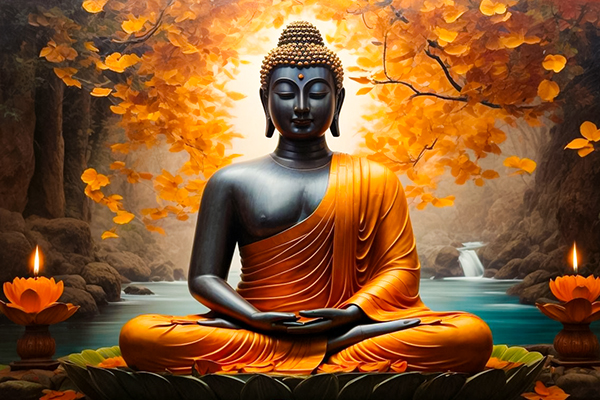
Buddha Purnima, a sacred day of profound spiritual significance, honors the birth, enlightenment, and nirvana of Bhagwan Gautama Buddha. This auspicious occasion, falling on the full moon day (Purnima) of the Vaisakha month, is revered as a time of deep reflection, wisdom, and spiritual awakening. Known as the day of enlightenment, Buddha Purnima symbolizes the triumph of truth, inner peace, and the path to liberation, inspiring devotees to overcome ignorance and attain higher consciousness.
In 2026, Buddha Purnima will be observed on
Friday, May 1, 2026.
This divine day is dedicated to fasting, prayers, meditation, and acts of compassion. Devotees honor Bhagwan Buddha by visiting temples, chanting his teachings, and engaging in selfless service that purifies the heart and mind. It is believed that observing Buddha Purnima with sincerity and devotion leads to spiritual growth, wisdom, and divine blessings. The day serves as a reminder of the transformative power of Dharma (righteousness), self-discipline, and the eternal guidance of the Enlightened One.
Festival Date, Time, Muhurat & Tithi
2588 th Birth Anniversary of Gautama Buddha
Buddha Purnima on Friday, May 1, 2026
Purnima Tithi Begins - 09:12 PM on Apr 30, 2026
Purnima Tithi Ends - 10:52 PM on May 01, 2026
This day is also known as Vesak or Vesakha or Buddha Day, a holiday followed conventionally by the Buddhists around the world.
Note: Sunrise and sunset vary by region and date due to India's geographical diversity. For exact timings, please refer to local astronomical data.
Significance & Importance of Buddha Purnima
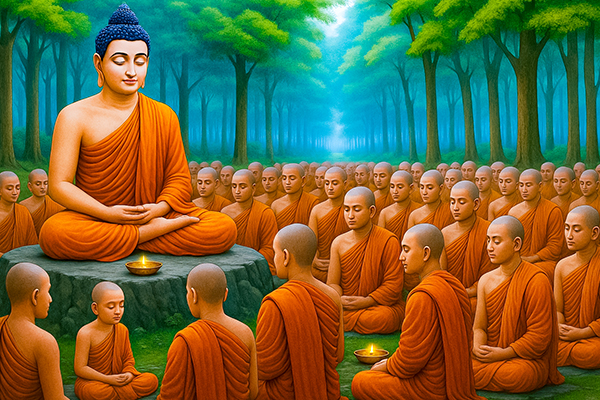
Buddha Purnima, also known as Vesak, Vaishakha, or Buddha Jayanti, is the sacred celebration of Bhagwan Gautama Buddha’s birth, enlightenment, and nirvana. Observed on the Full Moon day (Purnima) of the Vaisakha month, this day holds immense spiritual significance for Buddhists and followers of Dharma across the world. Bhagwan Buddha, a revered philosopher, spiritual teacher, and the founder of Buddhism, continues to inspire millions with his teachings on compassion, wisdom, and liberation from suffering.
Life and Legacy of Bhagwan Buddha
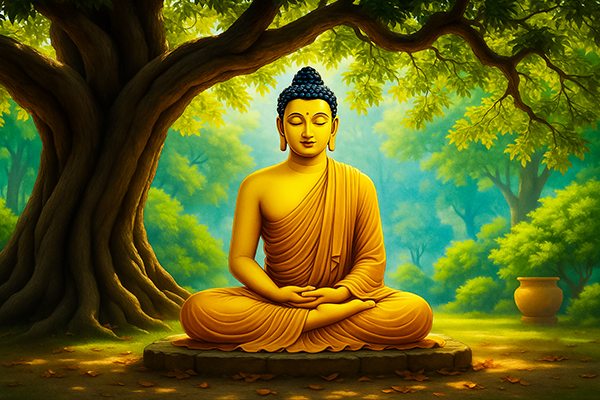
Born as Siddhartha Gautama, Bhagwan Buddha is believed to have lived approximately between 563–483 B.C., though exact historical records remain uncertain. According to many Hindu traditions, he is regarded as the ninth incarnation of Bhagwan Vishnu, though some regions, particularly South India, do not accept this classification.
Siddhartha Gautama’s journey toward enlightenment began with intense meditation and ascetic practices. After years of deep contemplation, he attained nirvana (supreme knowledge) under the Bodhi tree in Bodh Gaya, and later delivered his first sermon on Dharma (Dhamma) in Sarnath. These places, along with Lumbini (his birthplace) and Kushinagar (where he attained Mahaparinirvana), are considered the holiest Buddhist pilgrimage sites.
The Meaning of ‘Buddha’ and His Divine Names
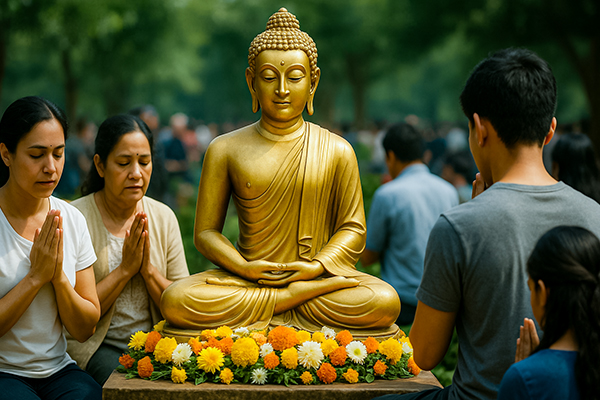
The word Buddha means “The Enlightened One” or “The Wise One”, signifying one who has attained ultimate truth and liberation. Bhagwan Buddha is addressed by several revered titles, reflecting his divine attributes and teachings:
Tathagata –
A term used in early Pali texts, often interpreted as “One who has come” or “One who has gone,” indicating his transcendental wisdom.
Sakyamuni – Meaning 'Sage of the Sakyas', referring to his birth in the Sakya clan.
Additionally, Buddhist canonical texts mention several names for Bhagwan Buddha, each highlighting his divine qualities:
Lokavidu –
'The Knower of Many Worlds,' signifying his deep understanding of the universe.
Sugato –
'Well-Spoken' or 'Well-Gone,' symbolizing his wisdom and noble path.
Sammasambuddho –
'The Perfectly Self-Awakened One,' denoting his supreme enlightenment.
Bhagavathi –
'The Blessed One,' revered by all.
Anuttaro Purisa-damma-sarathi –
'The Incomparable Trainer of Untrained People.'
Satthadeva-Manussanam –
'The Teacher of Gods and Humans.'
Araham –
'The Worthy One,' referring to his complete liberation from worldly attachments.
Vijja-carana-sampano –
'The One Endowed with Ideal Conduct and Higher Knowledge.'
Buddha Purnima is not only a commemoration of his life but also a time for deep spiritual reflection. The serene and meditative form of Bhagwan Buddha, depicted in statues and paintings, serves as a symbol of inner peace and enlightenment, inspiring all seekers of truth. Devotees observe this sacred day with prayers, meditation, acts of kindness, and selfless service, embracing the path of wisdom and compassion as taught by Bhagwan Buddha.
History of Buddha Purnima
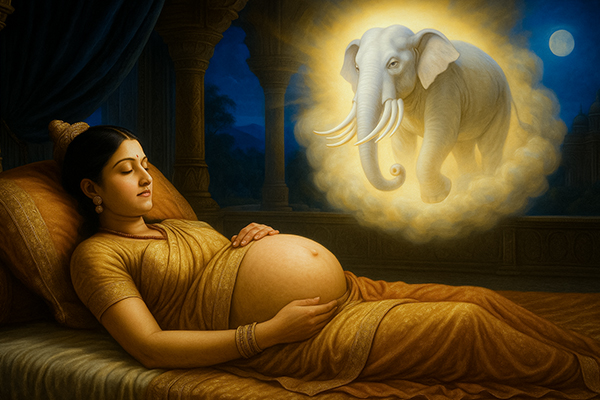
In the grand city of Kapilavastu, nestled within the sacred realm of the Shakya clan, a child was born to King Suddhodana and Queen Maya. He was named Siddhartha Gautama, a name rich in meaning, derived from the Sanskrit words 'Siddha' (to achieve) and 'Artha' (goal), signifying one who would attain the ultimate purpose of existence. His father, Suddhodana, bore a name symbolizing purity and prosperity, as 'Suddho' meant pure, and 'Dhana' or 'Dana' referred to grains of rice, the sacred sustenance revered in the Vedas as Anna Deva, the divine provider. It was believed that the one who grows rice, who nurtures life itself, was truly the richest among men.
Siddhartha was born into royal opulence, destined, as his father wished, to become a mighty ruler. Yet, fate had inscribed upon him a far greater purpose. His mother, Queen Maya, had an extraordinary vision on the night of his conception—she dreamt of a radiant white elephant with six tusks, descending from the heavens, entering her right side. This divine omen foretold the birth of an extraordinary being, one who would transform the world through wisdom and compassion. However, the Queen did not live to raise her son; she passed away soon after his birth, leaving him in the care of her sister, Mahapajapati Gotami, who nurtured him with love and devotion.
The young prince grew up within the confines of the royal palace, surrounded by grandeur and indulgence. As per Buddhist traditions, he belonged to the Ikṣvāku dynasty, the ancient Suryavansha lineage of noble kings. On the fifth day after his birth, a grand naming ceremony was held, attended by learned Brahmin scholars who gazed upon the infant with awe. They prophesied that Siddhartha would either ascend as a Chakravartin (Universal Monarch) or renounce worldly life to become a supreme spiritual teacher. This prediction planted a seed of concern in King Suddhodana’s heart, for he desired his son to be a mighty ruler, not a renunciant.
Determined to shape Siddhartha’s destiny, the King shielded him from all suffering, ensuring that he grew up in luxury, ignorance of pain, and blissful detachment from life’s harsh realities. Yet, destiny could not be defied. As he matured, Siddhartha grew increasingly restless, his soul yearning for something beyond the fleeting pleasures of the palace.
One fateful day, during an excursion beyond the palace gates, the prince encountered four sights that would forever alter the course of his life. He saw an aged man, a sick man, a dead body, and an ascetic. His charioteer, Channa, explained to him the inevitability of suffering—that age, illness, death, and renunciation were the inescapable truths of human existence. These visions shattered his illusions, filling him with deep sorrow and introspection. How could he live in luxury while the world was bound in suffering? How could fleeting pleasures satisfy a soul yearning for the eternal?
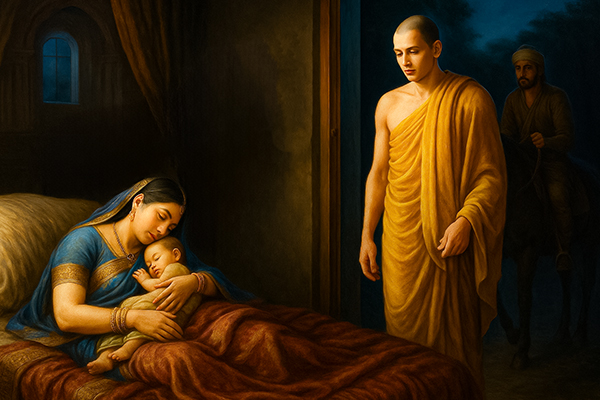
Burdened by these revelations, Siddhartha resolved to seek the Absolute Truth. Late one night, in the stillness of the royal chambers, he made the ultimate decision—to renounce his kingdom, his riches, his family, and all worldly attachments. He cast one last glance at his sleeping wife, Yasodhara, and their infant son, Rahul, before stepping into the darkness of the unknown. Accompanied only by Channa, he rode to the forest’s edge, where he discarded his princely attire, donned the robes of a mendicant, and walked away into the vastness of existence, seeking the path to enlightenment.
Thus began the journey of Siddhartha Gautama, not as a prince, but as a seeker of truth, a traveler on the road to self-realization, whose wisdom would one day illuminate the path for millions across the world.
Renouncing Family Life For Awakening

From an early age, Siddhartha Gautama exhibited a profound inclination toward spiritual inquiry, contemplating the deeper meanings of existence. Though he was raised in luxury and opulence, shielded from the harsh realities of life by his father, King Suddhodana, destiny had ordained a far greater path for him. The King, fearing the prophecy that his son might abandon the throne to become a spiritual leader, took great measures to keep him isolated from suffering and religious teachings. Yet, fate could not be denied.
During his visits beyond the palace gates, Siddhartha encountered four sights that profoundly unsettled him—an aged man, a sick man, a lifeless corpse, and an ascetic in serene contemplation. These encounters awakened in him a deep realization: all beings are bound by birth, aging, illness, and death, trapped in an endless cycle of suffering (dukkha) that repeats across lifetimes. He felt a powerful urge to seek a path that could liberate humanity from this cycle of sorrow and impermanence.
Reflecting on his privileged yet sheltered upbringing, Siddhartha later admitted in the early texts that he had led a life of indulgence, unaware of the fleeting nature of worldly pleasures. A profound transformation stirred within him—he realized that true fulfillment could not be found in material luxuries, but only in the pursuit of enlightenment.
One fateful night, with unwavering determination, Siddhartha renounced his princely life. As the palace lay in slumber, he took a final glance at his sleeping wife Yasodhara and their infant son Rahul, knowing that he must walk the path of truth, not as a prince, but as a seeker. Quietly, he left behind his crown, wealth, and familial bonds, venturing into the solitude of the forests.
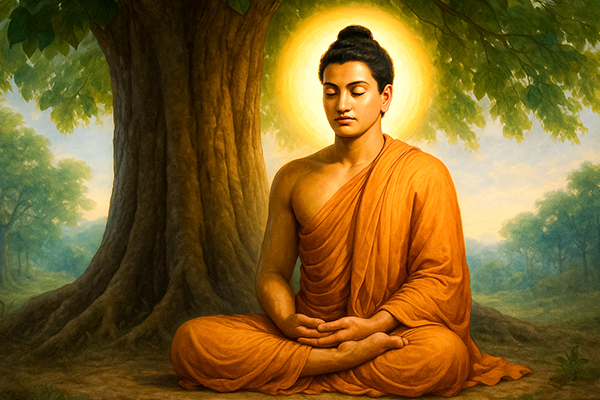
For years, Siddhartha wandered in deep meditation and ascetic practices, enduring severe hardships in his relentless search for the ultimate truth. His quest culminated in Bodh Gaya, where, under the sacred Bodhi tree, he attained enlightenment, forever transforming into the Buddha—the Awakened One. His journey from renunciation to realization became a beacon of light for humanity, illuminating the path to liberation from suffering and the attainment of eternal wisdom.
The Teachings of Buddha
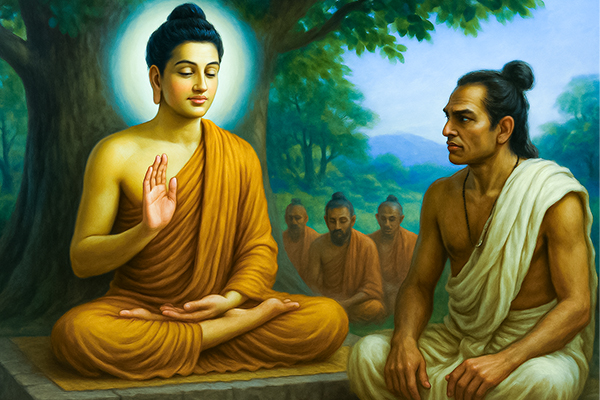
Bhagwan Buddha’s teachings have transcended time and geography, gaining worldwide recognition for their profound wisdom and transformative impact. His doctrines, preserved in ancient Buddhist scriptures, provide a path to liberation and inner peace. One of the fundamental principles he taught was the Middle Way or Middle Path, which emphasizes balance and moderation as the key to enlightenment. This concept forms the essence of the Noble Eightfold Path, a systematic guide toward spiritual awakening and liberation.
At the core of Buddha’s teachings lies the Dhammacakkappavattana Sutta, or 'The Discourse on the Turning of the Dharma Wheel,' which introduces the Four Noble Truths:
- Dukkha (Suffering) – Life is inherently filled with suffering.
- Samudaya (Origin of Suffering) – Suffering arises due to attachment, craving, and desire.
- Nirodha (Cessation of Suffering) – Liberation from suffering is possible by overcoming attachment.
- Magga (Path to Liberation) – Following the Eightfold Path leads to the cessation of suffering and attainment of Nirvana.
Buddha also elaborated on Karma and Rebirth, teaching that existence is a continuous cycle of birth, death, and rebirth (Samsara) driven by one’s actions. Unlike the traditional notion of karma as mere action, Buddha emphasized intention, asserting that thoughts, words, and deeds shape one’s future experiences. He also expounded the principle of Dependent Origination (Paticca Samuppada), encapsulated in the Pali phrase 'Evam sati idam hoti' ('When this exists, that arises'), signifying that every phenomenon is conditioned by another, much like desire leading to suffering.
Buddha was a revolutionary thinker who challenged the rigid social order of his time. He openly criticized the Brahmanical traditions that linked spiritual attainment to caste or birth, advocating instead that morality and ethical conduct define a true Brahmin. Unlike Brahmin priests who kept their sacred mantras hidden, Buddha believed that wisdom should be shared freely for the benefit of all beings. He rejected the idea that liberation could be attained solely through ritualistic practices, instead emphasizing self-discipline, mindfulness, and wisdom as the true path to enlightenment.
The depth and universality of Bhagwan Buddha’s teachings continue to inspire millions, transcending cultural and religious boundaries. His unwavering emphasis on compassion, equality, and self-realization has ensured his enduring relevance in the modern world, making him one of the most revered spiritual teachers in history.
How to celebrate Buddha Purnima
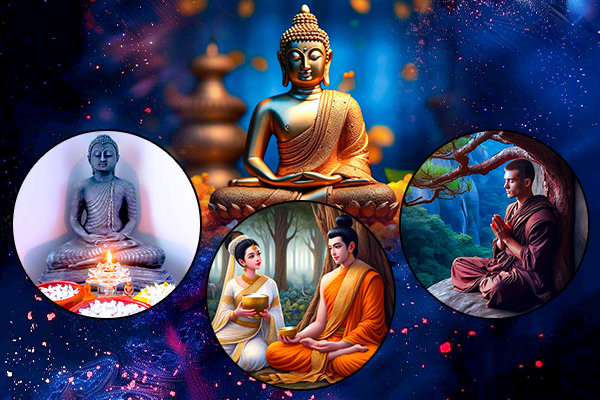
When the world is engulfed in ignorance, hatred, and uncontrolled sensory indulgence, an Enlightened One descends to guide lost souls toward the path of wisdom and liberation.
Bhagwan Buddha, through his profound teachings, reclaimed many from the depths of spiritual blindness. Recognizing that neither extreme asceticism nor unrestrained sensual pleasure leads to true fulfillment, he discovered the Middle Path (Majjhima Paṭipadā)—a balanced approach to life that fosters inner peace and enlightenment.
Buddha Purnima, the sacred day that commemorates Bhagwan Buddha’s birth, enlightenment, and Mahaparinirvana, can be celebrated in simple yet meaningful ways that honor his life and teachings.
Visiting a Vihara (Monastery)
A
Vihara
is a Buddhist monastery, a place of meditation and spiritual reflection. If there is a Vihara in your city, visiting it on this auspicious day can be a deeply enriching experience. You may:
- Sit in silent contemplation before a Buddha statue.
- Offer fresh flowers as a gesture of reverence.
- Light a Diya (oil, ghee, or butter lamp) and place it alongside others, symbolizing the dispelling of ignorance through wisdom.
Dressing Simply
Simplicity is at the heart of Buddha’s teachings. One can wear plain white or saffron attire, embodying purity and detachment from material excess. A shawl may also be used during prayers or meditation as a mark of humility and devotion.
Cooking and Offering Kheer (Rice Pudding)
A traditional way to celebrate Buddha Purnima is by preparing
Kheer
, a sweet rice pudding. This dish holds special significance in Buddha’s life—during his period of intense asceticism, he grew physically weak, surviving on just a leaf or a nut per day. When he collapsed while bathing in a river, a village girl named
Sujata
offered him Kheer, which helped him regain strength.
Kheer is made using:
- Rice grains
- Milk
- Sugar
- Water
These ingredients are regarded in the Vedas as Sattvik, meaning they promote purity of mind and nourish the finer tissues of the brain, aiding in focus and spiritual clarity. On Buddha Purnima, it is customary to refrain from non-vegetarian food and instead consume simple, pure offerings.
Practicing Meditation
Meditation (Dhyāna) is central to Buddhism, as Bhagwan Buddha emphasized its power in attaining self-realization.
On this day, one can:
- Read or listen to Buddha’s teachings before meditating.
- Meditate in a Vihara, where the vibrations of sacred chants enhance inner tranquility.
- If unable to meditate due to mental distractions, playing Buddhist chants and focusing on their sound can help calm the mind.
Bringing Buddha’s Presence into Your Home
To deepen your connection with Buddha’s teachings, you may:
- Read more about his life and wisdom.
- Install a Buddha idol or hang a Buddha painting in your home, creating a conducive space for meditation and reflection.
By embracing these simple yet profound practices, one can celebrate Buddha Purnima in a way that aligns with its true essence, honoring the enlightened path and cultivating inner peace.
Buddha Purnima Festival Puja Vidhi (Puja Procedure)
Observing this day with devotion and a simple yet sincere puja (worship) brings spiritual merit and inner peace. The following is a step-by-step Puja Vidhi that can be performed at home or in a monastery.
- Purification and Preparation: Begin by cleaning the puja area and taking a bath to purify the body and mind. Wear simple, clean attire—preferably white or saffron-colored clothes—to symbolize purity and renunciation.
- Setting Up the Altar: Place a Buddha idol or image in the center of the altar. Surround it with fresh flowers, a Diya (oil or butter lamp), incense sticks, and a bowl of water, representing the elements of nature and purification.
- Offering Flowers and Candles: Light the Diya and incense sticks while meditating on Bhagwan Buddha’s teachings. Offer fresh flowers at Buddha’s feet, symbolizing the transient nature of life and devotion to the path of enlightenment.
-
Chanting and Mantra Recitation:
Recite Buddhist prayers and mantras , such as:
Buddham Sharanam Gacchami (I take refuge in the Buddha)
Dhammam Sharanam Gacchami (I take refuge in the Dharma)
Sangham Sharanam Gacchami (I take refuge in the Sangha)
Chanting these lines with sincerity invokes the blessings of Bhagwan Buddha and strengthens one’s spiritual resolve. - Reading Buddha’s Teachings: On this day, reading from Dhammapada or other Buddhist scriptures is highly auspicious. Reflecting on the Four Noble Truths and the Noble Eightfold Path deepens one’s understanding of Dharma.
- Offering Kheer (Rice Pudding): Prepare Kheer (sweet rice pudding) as an offering, remembering the story of Sujata, who offered Kheer to Buddha before his enlightenment. This symbolizes nourishment, kindness, and the middle path.
- Practicing Meditation: Spend some time in silent meditation (Dhyana), focusing on mindfulness and inner peace. Even a few minutes of deep breathing and stillness can bring clarity and tranquility.
- Acts of Compassion and Charity: Buddha emphasized Dana (charity) as a noble virtue. Distribute food to the needy, release caged birds or animals as a gesture of non-violence, and practice kindness in speech and actions.
- Concluding the Puja: End the puja by offering pranams (prostrations) to Buddha, seeking his blessings for wisdom, peace, and liberation from suffering. Extinguish the lamp with gratitude and resolve to follow the path of Dharma in daily life.
Buddha Purnima is a time for reflection, compassion, and inner transformation. By performing this simple puja with devotion and sincerity, one aligns with the enlightened teachings of Bhagwan Buddha, fostering peace within and around.
Buddha Purnima Puja Mantra
The most powerful mantra for Buddha Purnima Puja is the Shakyamuni Buddha Mantra, which invokes the blessings of Bhagwan Buddha and aids in wisdom, compassion, and enlightenment.
Shakyamuni Buddha Mantra
'Tadyatha Om Muni Muni Mahamuniye Svaha'
Meaning:
Tadyatha –
'Thus it is' (a traditional opening for mantras)
Om –
The universal sound, invoking divine energy
Muni Muni –
Refers to the Sage of the Shakyas, Bhagwan Buddha
Mahamuniye –
The Great Sage, the Supreme Enlightened One
Svaha –
A sacred offering, surrendering to the wisdom of the Buddha
Benefits:
- Awakens wisdom and inner peace
- Removes ignorance, suffering, and negative karma
- Helps in attaining mindfulness and spiritual progress
- Strengthens devotion and connection to Buddha’s teachings
Chant this mantra 108 times during the puja for maximum spiritual benefits.
Buddha Purnima Vrat Vidhi (Fasting Procedure)
.jpg)
Observing a fast on Buddha Purnima is a sacred practice that signifies self-discipline, purification, and devotion to the teachings of Bhagwan Buddha.
The vrat begins at sunrise and continues until moonrise or the following morning, depending on individual spiritual practices. Devotees abstain from consuming non-vegetarian food, alcohol, onion, and garlic, as these are considered tamasic and not conducive to spiritual growth. A pure vegetarian diet, preferably sattvic food like fruits, nuts, milk, and kheer, is consumed if partial fasting is observed.
During the fast, devotees engage in prayers, meditation, and chanting of Buddha mantras to seek inner peace and enlightenment. Visiting a Vihara (Buddhist monastery) or a temple, offering flowers, lighting diyas, and reciting the Dhammapada or Buddha’s teachings is considered highly auspicious. Many also perform acts of charity, such as feeding the poor, donating clothes, or releasing caged birds, symbolizing compassion and kindness.
The fast is concluded with prayers at night, followed by the consumption of simple sattvic food. Some devotees extend the vrat until the next morning after offering prayers at sunrise.
The essence of Buddha Purnima fasting is not just abstinence from food but also purification of thoughts, self-restraint, and reflection on Buddha’s wisdom, leading to inner transformation and spiritual elevation.
Buddha Purnima Vrat Katha (Traditional Fasting Story)
.jpg)
Long ago, in the prosperous kingdom of Kapilavastu, a divine prince named Siddhartha Gautama was born into the noble Shakya dynasty. His father, King Suddhodana, envisioned a great ruler in him and shielded him from the harsh realities of life. However, destiny had a different path for the young prince. One day, when Siddhartha ventured beyond the palace gates, he encountered four sights that would change his life forever—an old man, a sick man, a dead body, and a sannyasi (ascetic). These visions awakened a deep realization within him: life was impermanent, suffering was inevitable, and true peace lay beyond material wealth and pleasure.
Troubled by these revelations, Siddhartha renounced his royal life and embarked on an arduous spiritual quest. He wandered across forests, learning from sages and engaging in intense penances. For six long years, he practiced severe austerities, fasting to the point of near starvation, hoping to conquer suffering through self-denial. Yet, the answers he sought remained elusive, and his body grew frail and weak. His once radiant form had become a shadow of its former self, yet enlightenment still evaded him.
One fateful day, as he meditated near the Niranjana River in Bodh Gaya, a compassionate village girl named Sujata saw his fragile state. Mistaking him for a celestial being, she offered him a golden bowl filled with kheer (sweet rice pudding), prepared with great devotion. As Siddhartha accepted the offering and consumed the nourishing meal, a profound realization dawned upon him—true wisdom is found in balance, not in extremes. The path to enlightenment lay not in indulgence nor in self-torture, but in the Middle Way (Majjhima Patipada).
Strengthened by this revelation, he resumed his meditation under the sacred Bodhi tree. On the night of the full moon in the month of Vaishakha, the universe itself seemed to hold its breath as the prince entered deep meditation. As the night unfolded, he transcended the bonds of ignorance and illusion, witnessing the truth of Dukkha (suffering), its cause, and the path to liberation. At the break of dawn, Siddhartha Gautama had become the Buddha—the Awakened One.
From that sacred moment, fasting on Buddha Purnima became a revered practice. Devotees observe this day with prayers, meditation, and acts of compassion, mirroring the journey of Bhagwan Buddha. It is believed that those who keep this fast with faith and sincerity are blessed with wisdom, inner peace, and liberation from the endless cycle of birth and death (samsara). Just as Siddhartha attained Nirvana on this auspicious day, devotees too seek spiritual awakening, embracing the timeless teachings of the Enlightened One.
Puja Utensils, Essentials
Rudra Centre
brings an extensive collection of Puja Articles which caters to all that is required for daily and special Puja Vidhis. We offer variants of designs and sizes in each category. The list includes handcrafted Puja Mandirs, Puja Pedestals, offering Bowls, Panchpatra, intricately carved Puja Thalis, Abhishek Vessels, in different materials, Pure Silver/German Silver articles like Kalash, set of Shodash Upachara and Several other Puja Articles, which we deliver at your doorstep.
Visit the complete collection:
Buddha Face Brass Statue
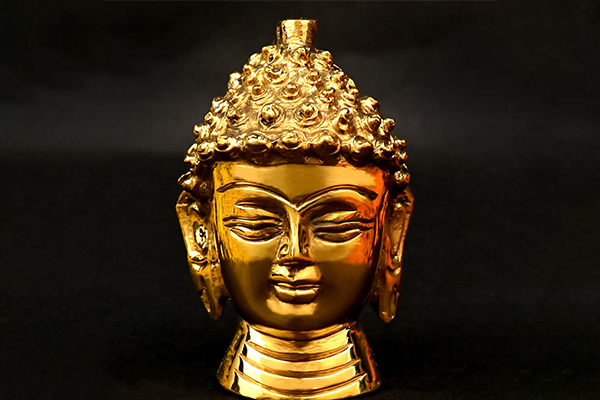
This idol of Bhagwan Buddha's face has been created using pure brass. You can place this idol at your place, desk or any purified area to feel his blessings. The elegant idol shines with its rich looks and attracts those who are enchanted by mystic articles.
Buddha Locket in Gold

This Fabulous Serene Locket illustrating Bhagwan Buddha’s face is made in pure 18K gold. It also makes an ideal gifting item for your spiritual friends. This graceful Bhagwan Buddha’s face pendant is bound to look divine and graceful on you.
Bhagwan Buddha shawl in soft Jacquard fabric
This beautiful Shawl is Jacquard weaved in soft woollen fabric with knotted tassels at the ends. This shawl has image of 'Bhagwan Buddha' and beautiful 'floral patterns' artistically weaved all over with black and respective colored soft woolen thread.
Buy Now
Bhagwan Buddha idols
Perfectly crafted, serene Bhagwan Budhha Idols, available in different designs, made of heavy Brass. Bhagwan Buddha is a Spiritual Master/Guru, His invaluable philosophical discourses, guidance to follow 'the middle path', the importance of using meditation, and practicing compassion have touched the lives of many devotees across the world. These idols are perfect for your home or office to invite peaceful and serene energies.
Buy Now
Lapis Lazuli Buddha Bracelet

Elegant Lapis Lazuli Buddha Bracelet is made using 16 natural round Lapis Lazuli beads with the face of Bhagwan Buddha in german silver. The beauty of the bracelet is enhanced with stone studded metal spacers.
Conclusion
Buddha Purnima stands as a sacred beacon of enlightenment, compassion, and self-transcendence, marking the birth, enlightenment, and Mahaparinirvana of Bhagwan Buddha. It is not merely a festival but a spiritual awakening, reminding humanity of the impermanence of life, the significance of righteous conduct, and the path to inner liberation.
On this auspicious day, devotees reflect upon the wisdom of the Buddha, practicing his teachings through prayers, fasting, meditation, and acts of kindness. Temples and Viharas reverberate with the sacred chants of the Dhamma, while lamps are lit as symbols of the eternal light of wisdom dispelling the darkness of ignorance. The act of offering flowers, incense, and kheer pays homage to the divine compassion that led the Buddha to guide humanity towards the Middle Path, a journey of balance, mindfulness, and self-realization.
Beyond rituals, Buddha Purnima is a call to live by the principles of non-violence (ahimsa), truthfulness (satya), and detachment from suffering (dukkha). It inspires seekers to cultivate peace, wisdom, and universal love, embracing a life free from desires and attachments. Just as the Buddha attained Nirvana under the Bodhi tree, every individual is encouraged to walk the noble path of the Four Noble Truths and the Eightfold Path, unlocking the gateway to ultimate bliss and liberation.
As the full moon of Vaishakha bathes the world in its celestial glow, Buddha Purnima serves as a reminder that enlightenment is within reach, not through external possessions but through inner transformation and self-awareness. The festival is an invitation to transcend the mundane, to awaken the dormant wisdom within, and to walk the path of the Buddha—with compassion in the heart, mindfulness in actions, and serenity in the soul.


-in-Astrology.jpg)
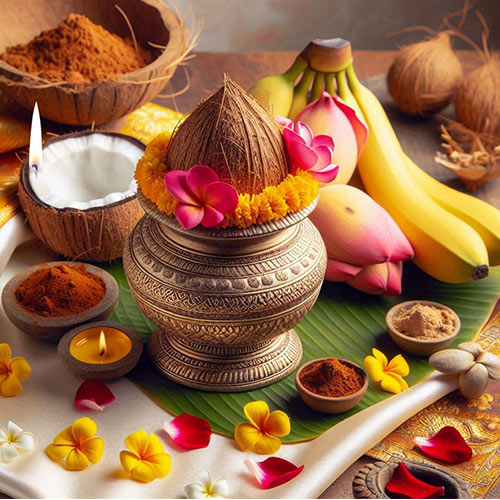
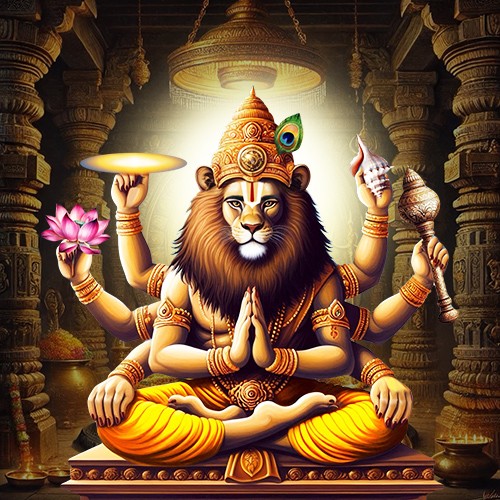
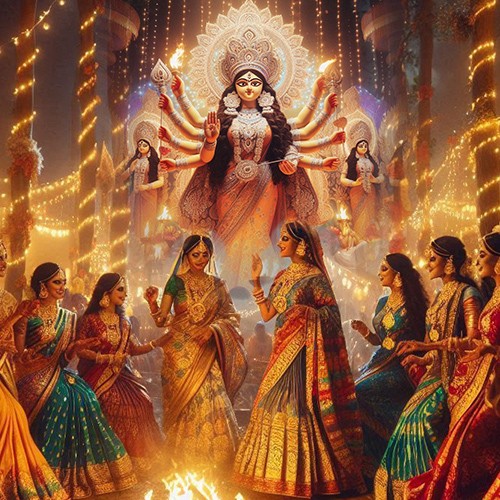


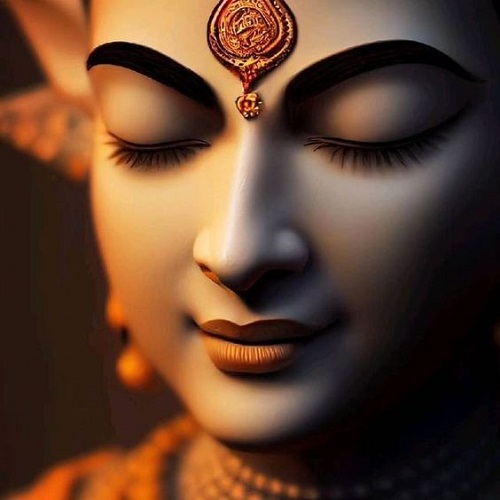
.jpg)

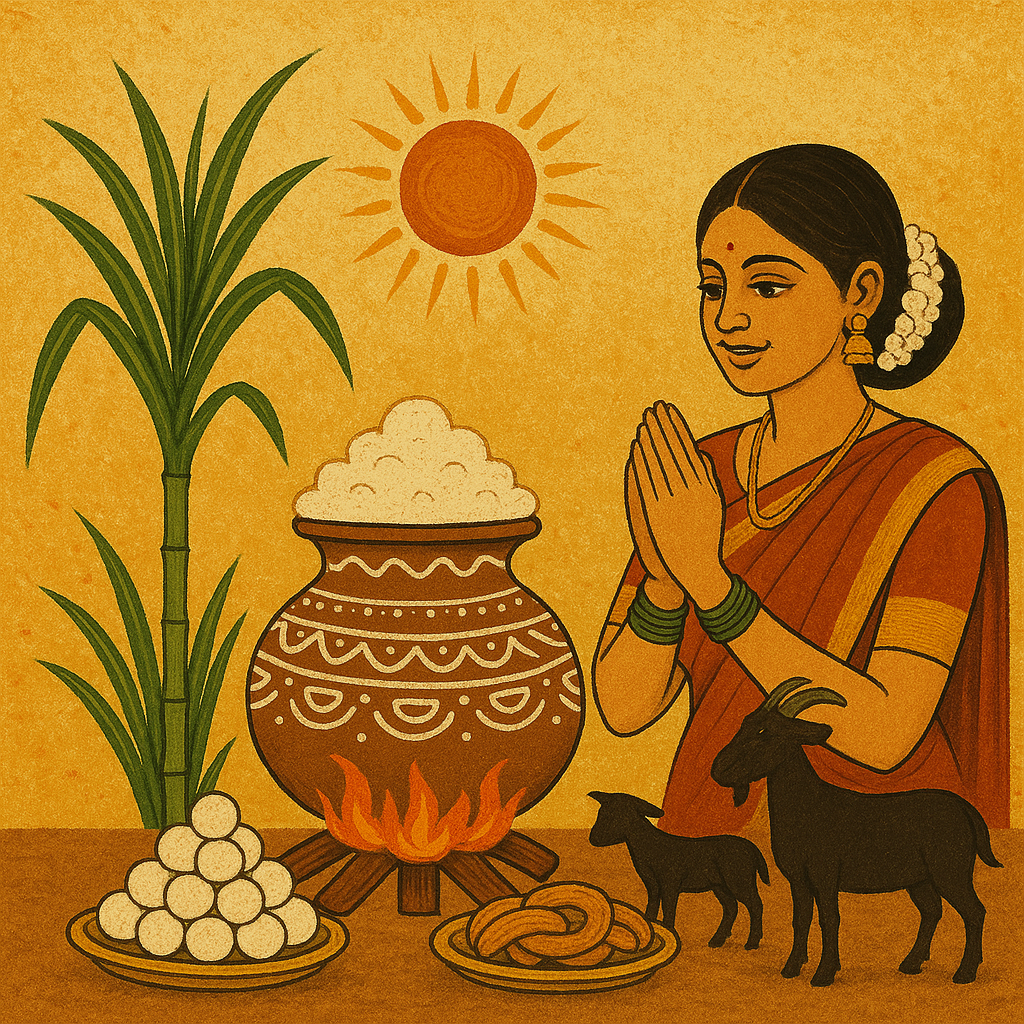
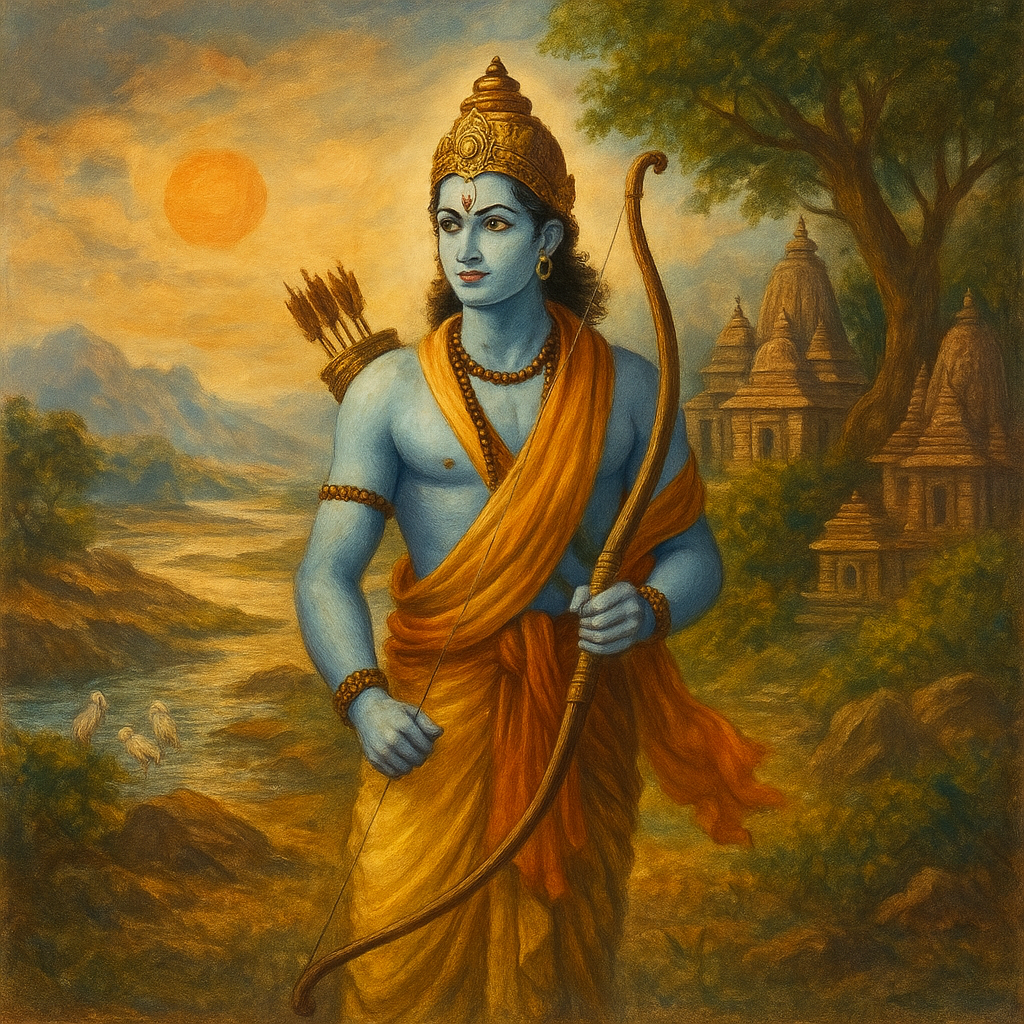
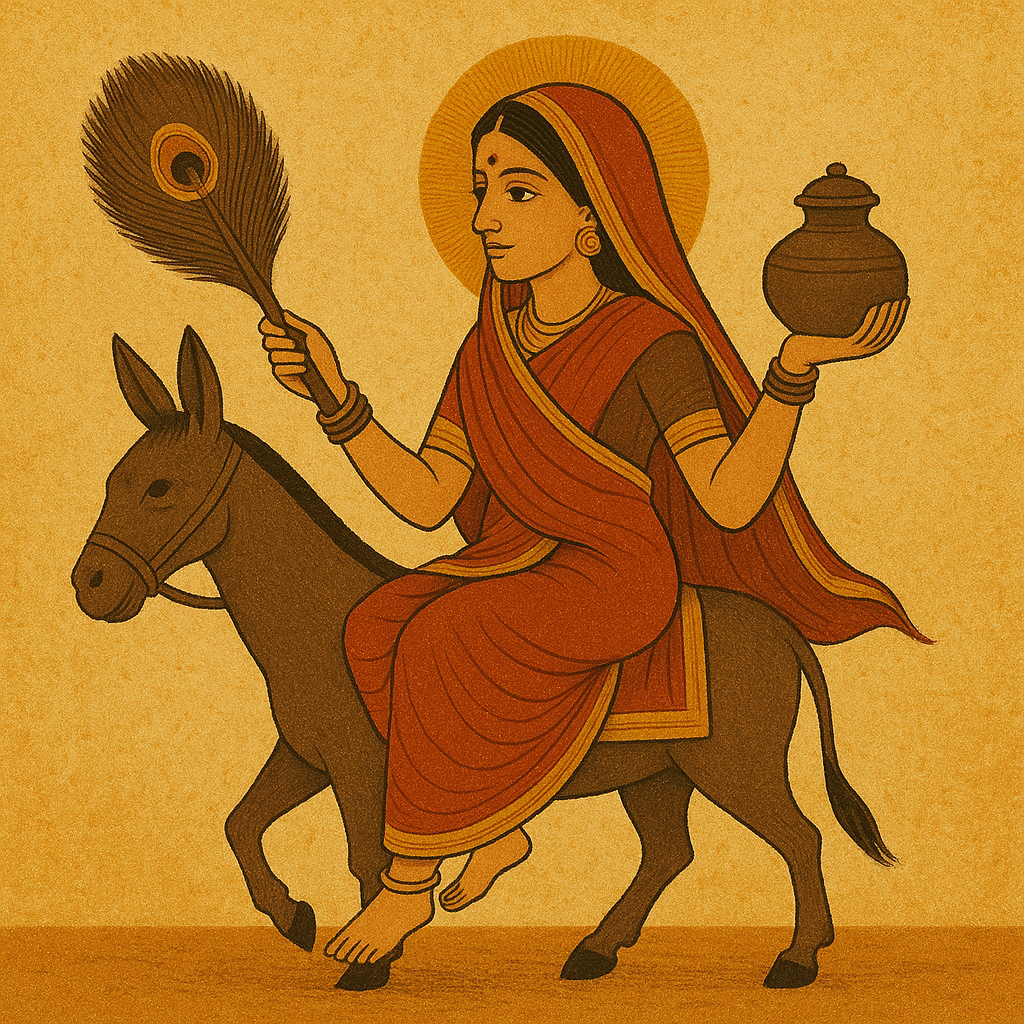
Comments 0
Leave your thought here